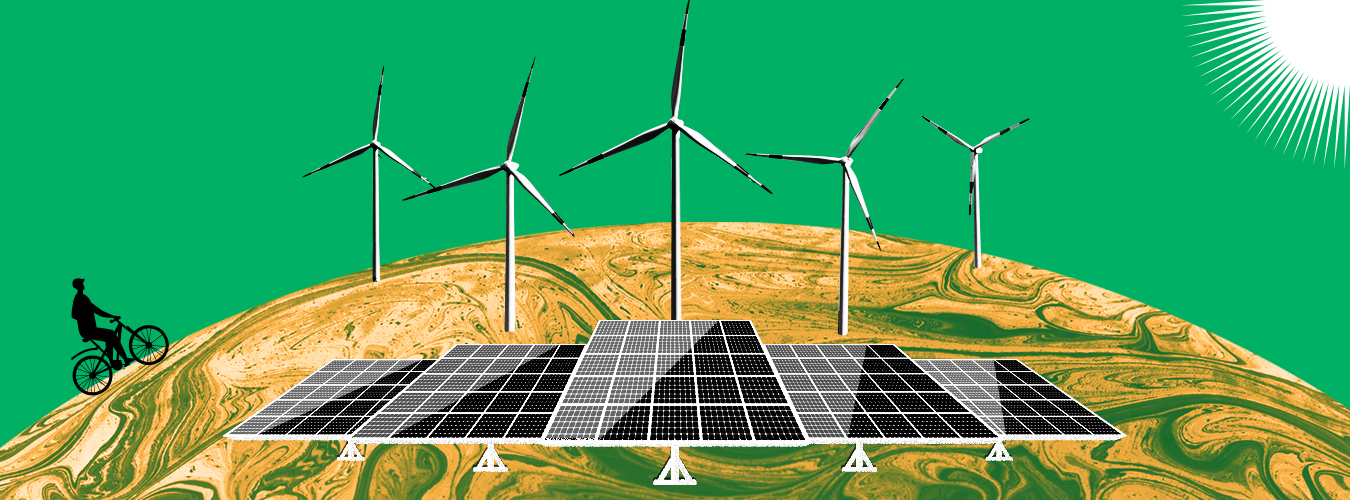In the face of climate change and dwindling fossil fuel reserves, the world is increasingly turning towards renewable energy sources to meet its growing energy demands sustainably. The evolution of renewable energy technologies has been transformative, offering viable alternatives to traditional fossil fuels and promising a cleaner, greener future for generations to come.
1. Solar Power: Harnessing the Sun’s Energy
Photovoltaic (PV) technology, which converts sunlight directly into electricity, has seen significant advancements in efficiency and affordability. The installation costs of solar panels have plummeted over the years, making solar energy increasingly competitive with conventional energy sources. Moreover, innovations in concentrated solar power (CSP) have enabled the generation of electricity even after sunset by storing thermal energy.
2. Wind Energy: Tapping into Nature’s Windfall
Wind energy has also experienced remarkable growth, with turbines harnessing the kinetic energy of wind to produce electricity. Offshore wind farms, in particular, have emerged as a lucrative frontier due to stronger and more consistent wind speeds compared to onshore locations. Advances in turbine technology, including larger blades and more efficient designs, have bolstered the viability and scalability of wind power as a major contributor to the global energy mix.
3. Hydropower: Exploiting the Power of Water
Hydropower remains a cornerstone of renewable energy, utilizing the gravitational force of flowing water to generate electricity. Large-scale dams and hydroelectric plants provide a stable and reliable source of energy, albeit with environmental considerations such as habitat disruption and displacement of communities. However, innovations in small-scale hydropower and run-of-the-river systems are offering more environmentally friendly alternatives, especially in regions with abundant water resources.
4. Bioenergy: Harnessing Biomass for Energy
Bioenergy encompasses a diverse range of renewable energy sources derived from organic materials, such as agricultural residues, forestry by-products, and dedicated energy crops. Biomass can be converted into biofuels like ethanol and biodiesel, which can directly substitute for fossil fuels in transportation and industrial sectors. Additionally, bioenergy technologies such as anaerobic digestion and gasification offer efficient means to produce heat, electricity, and biofuels while minimizing greenhouse gas emissions.
Geothermal energy utilizes the heat stored beneath the Earth’s surface to generate electricity and provide heating and cooling solutions. This renewable energy source is particularly advantageous in regions with active tectonic activity, such as geysers and hot springs. Advances in enhanced geothermal systems (EGS) are expanding the geographical scope of geothermal energy utilization, making it a viable option for sustainable energy production in diverse geological settings.
Challenges and Opportunities
While renewable energy technologies have made significant strides, challenges remain in their widespread adoption and integration into existing energy infrastructures. Issues such as intermittency, grid stability, and energy storage capacity need to be addressed through continued research and development. Moreover, policy support and investment incentives are crucial for accelerating the deployment of renewable energy projects globally.
The Path Forward
The future of renewable energy lies in innovation, collaboration, and commitment to sustainable development goals. Continued advancements in technology, coupled with proactive policy measures, will be essential in scaling up renewable energy capacities and reducing dependence on fossil fuels. Transitioning towards a renewable energy future not only mitigates the impacts of climate change but also fosters economic growth, job creation, and energy security across the globe
Conclusion
The evolution of renewable energy represents a paradigm shift towards a more sustainable and resilient global energy system. From solar and wind power to hydropower, bioenergy, and geothermal resources, the diversification of renewable energy sources offers a multifaceted approach to addressing the world’s energy challenges. Embracing these technologies not only safeguards the environment but also ensures a brighter and more prosperous future for generations to come.
